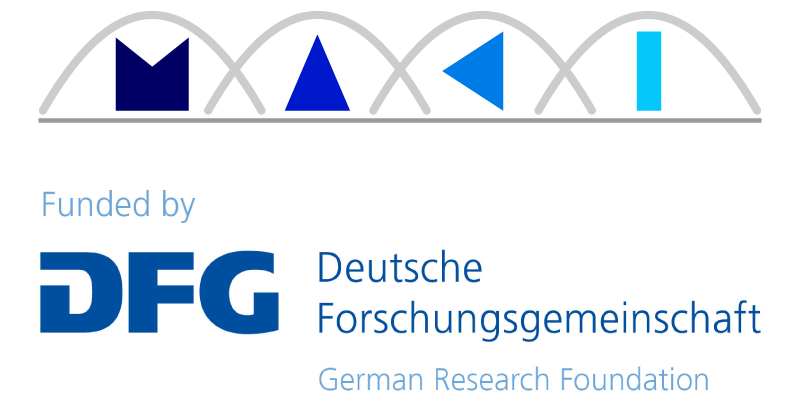Cross-Layer Information Dissemination and Collection in Wireless Multihop Networks
Mobile, social communication applications propagate information from one or multiple source nodes to one or multiple sink nodes over multiple hops in wireless multihop networks. Our focus is on one-to-many or point-to-multipoint communication patterns, where information available at one source is transmitted or disseminated to multiple nodes. In case that the sink nodes are in transmission range of the source, this single hop multicast can be done on the physical layer (PHY). If the sink nodes are distributed outside the transmission range of the source node, then the multicast needs to be handled over logical connections, which is done at the network layer. Due the multihop multicast transmission, the information can be split, transmitted over different paths and can be merged at the sink node again.
The design and optimization of mechanism in wireless networks is performed isolated at different layers. On the PHY and the medium access layer (MAC) the optimization focuses on the single hop communication, while on the network layer (NET) optimization targets end-to-end communication over multiple hops. In order to support the communication pattern point-to-multipoint, it is not beneficial to follow the isolated layer by layer approach, since the inherent properties of the communication channel, i.e., the broadcast nature or the time and frequency depending channel, are not utilized. Hence, a joint optimization of PHY/MAC/NET promises high system gains.
In order to support the aforementioned communication pattern optimally in wireless multihop networks, modular and combinable protocols and methods will be used on PHY, MAC and NET. The introduction of transitions will drive the system to the optimal operation point by adaptively changing between protocols and PHY mechanisms. Here two kind of transitions will be considered: The first transition is from unicast communication to multicast communication and the second transition is from non-cooperative to cooperative mechanisms. In particular the inter-dependency between the layers has to be considered. Three optimization goals will be analyzed: robustness, efficiency and fairness. The trade-off between two or more protocols and mechanisms depends on the optimization goal, the requirement of the user, capability constraints of the node etc. The decision can be taken on one layer or jointly over multiple layers.
The evaluation of solutions and feasible transitions require adapted metrics and adapted assessment criteria, respectively; e.g. throughput, energy consumption, delay etc. Therefore project C01 provides an important contribution to the SFB. This is particularly true, since the lower layers are of utmost importance in wireless and mobile systems, and a holistic view of a communication system with automated transition between similar mechanisms can capitalize on this potential.
Subproject leader C01
- Prof. Dr.-Ing. Matthias Hollick
- Prof. Dr.-Ing. Anja Klein



